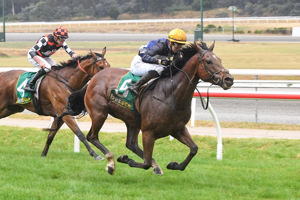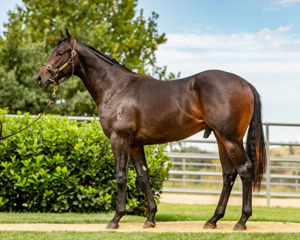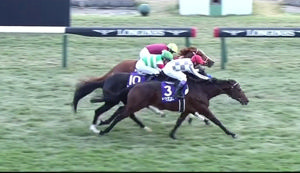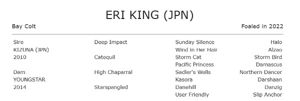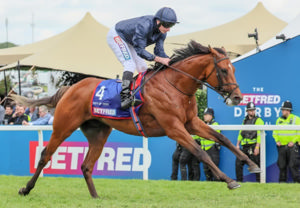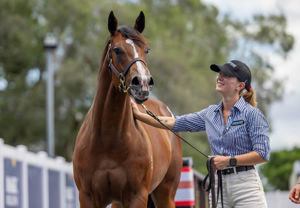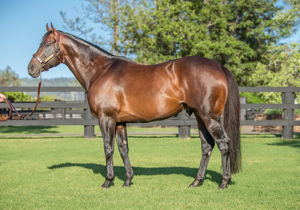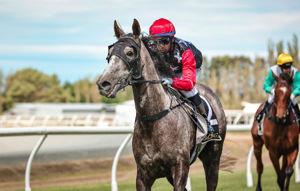Over the years I’ve written numerous articles outlining what the ATO and case law accepts as being a horse breeding and/or racing ‘business’ for income tax and GST purposes. As a specialist adviser in Primary Production tax, the bias towards this topic makes perfect sense as this is the most common query we advise upon for new and existing clients.
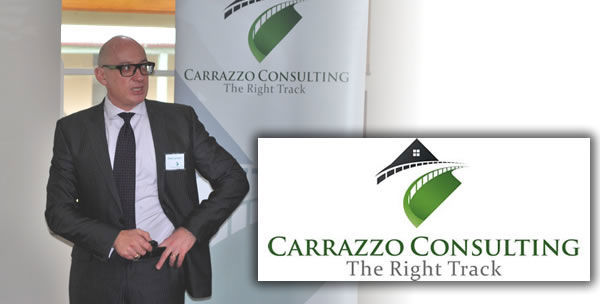
However, what we have also found is that horse breeders very often conduct other primary production activities on their properties (or elsewhere), in fact their commercial horse breeding is very often an afterthought! Accordingly, they often also seek our advice on whether these other primary production activities are a taxation business.
I will dedicate this article to explaining what current ATO pronouncements and case law, which are ultimately the primary authorities, accepts as being a tax business across many other primary production activities.
1.0 Overview
The following are summaries of the ATO’s rulings and of the more important case law decisions which consider whether particular activities constitute a business of primary production.
Certain features of those activities have been identified and relied upon. For example, varying degrees of significance have been attached to features such as whether the activities are merely a hobby, whether the venture may, at least eventually, be profitable, the scale of the activities and whether the activities are characteristic of the line of business in which the venture is made.
2.0 Primary production “business” cases for various activities
a) Afforestation
The taxpayer took part in an afforestation scheme and was allowed to deduct management fees prepaid for 21 years as expenses of carrying on a business (FC of T v Lau 84 ATC 4929).
The taxpayer was a doctor who joined a scheme for establishing and maintaining a pine forest plantation. X Ltd. executed a lease in favour of the taxpayer for 10 hectares of land ``for pine tree growing purposes only''. The lease was for three years with options to renew for further periods up to a maximum of 21 years. The taxpayer also entered into a management agreement with Y Ltd. for a period of 21 years.
In his personal return the taxpayer claimed a deduction of $40,020 made up of the management fee, rent on the land and legal expenses. The ATO disallowed the deduction on various grounds and the taxpayer successfully appealed to the Supreme Court of Queensland.
The Supreme Court decided that the transactions were not shams, that there was no reason to treat the prepayment as a capital outlay, that the taxpayer's claim for a deduction was within deduction guidelines.
b) Agistment
Income of primary producers from the occasional use of the assets of their businesses in the course of carrying out those businesses, such as from the grant of short term agistment rights to other primary producers or short-term hiring of plant to another primary producer, is regarded as income from primary production. However, this does not extend to cases where property is used solely for agistment or where plant is used by a primary producer in general contract work.
(c) Cattle, sheep and other livestock
- Cattle venture not successful because of drought was a primary production business
(Case D4, 72 ATC 13)
The taxpayer, a country solicitor, after obtaining advice from local farmers and the district agronomist, purchased a property in the vicinity of the town where he continued to live and to carry on his legal practice. The property was zoned non-urban and at the date of purchase was in a run-down condition although it had been used to some extent for farming purposes by the previous owner. Taxpayer carried out various works on the property including the repair of fences, sinking of a bore, construction of a dam and the providing of a certain amount of irrigation. He also attempted to grow some crops and graze a number of cattle he had bought with a view to their re-sale. However, due to drought conditions, he was not successful in these attempts. Several years after acquiring the property the taxpayer, having received a legacy, built a home on the property and resided in it.
The objective facts when considered along with taxpayer's evidence as to his purpose and intention in engaging in the farming activities showed activities on the part of taxpayer which were normally characteristic of those to be expected in the carrying on of a business of primary production.
- Weekend rural activities with nine head of cattle and 40 sheep (Case Q26, 83 ATC 122)
In 1969, the taxpayer purchased a 90-acre property which he attended mainly on weekends. The taxpayer decided on a plan to improve the property. To this end, he upgraded the water supply system, regravelled the access road and constructed a set of cattle yards.
For the 1980 and 1981 years, the ATO took the view that the taxpayer was not carrying on a business of primary production, even though it was accepted in prior years that he was engaged in such a business. During that period, the taxpayer ran on average six to nine head of cattle on the property. This was somewhat less than in previous years but was attributable to fire and drought conditions. The taxpayer also had 26 to 40 head of sheep agisted on the property.
On objection it was held that the taxpayer was carrying on a business of primary production at the relevant time despite evidence from a valuer that he had failed to attend to pasture improvements. Even though his level of activity may have been reduced in comparison to previous years, this was the result of the bush fire and drought conditions.
- Cattle, pigs and a small orchard (Case 132, 10 CTBR)
A mine manager acquired a 31-acre property several hundred miles away from his usual residence and employed a manager to clear, cultivate and crop the property. Cattle and pigs were bought, reared and sold and a small orchard to produce saleable nuts was established.
It was held that, despite the disproportion between the revenue derived and the outgoings incurred, the taxpayer was carrying on a farming business, the Board observing that “a business is none the less a business even it is not well managed or is conducted (as this has been) in such a way that it was almost inevitably show a loss.”
(d) Fishing
- Fishing business continued after sale of primary boat (Case U185, 87 ATC 1063)
For 32 years the taxpayer he had owned a vessel which, with the aid of a “net boat'', he used to catch fish by the time-honoured ``beach seining'' method. In 1983 the taxpayer sold the vessel and decided to make a living from the 16-foot net boat which he continued to employ in beach seining. In the 1984 year, the taxpayer devoted most of his time to working on his son's vessel helping his son to develop his expertise in fishing. The taxpayer's only income from fishing in that year came from a share of his son's fishing operations.
In the 1985 year the taxpayer's only income from fishing was only $131. Against this income, the taxpayer claimed expenditure in relation to his fishing business of $6,570. Having regard to this result, and taking into account the apparent pause in the taxpayer's fishing activity in the previous year, the ATO viewed the taxpayer's activities in 1985 as either involving no more than a hobby or pastime and rejected his tax business status, The taxpayer objected and won.
In all the circumstances it was held that the reduced activities of the taxpayer in 1984-1985 should be seen as reflecting a temporary downturn in the continued carrying on of his old business of fishing.
(e) Fruit, nuts and other crops
- Preparatory activities in macadamia nut farming (Case U192, 87 ATC 1098)
The taxpayer's involvement in this macadamia growing venture began in March 1981 when he and his wife, along with 13 other individuals, entered into a contract to purchase a portion of 400 acres of land from M. Pty. Ltd., which was promoting and co-ordinating the scheme. Due to uncertainty and delays the taxpayer and his wife instead leased the land from M. Pty. Ltd.
The taxpayer had originally planned to plant his trees in the 1983 calendar year but the trees were never planted due to various factors which included: (i) the lack of finance (ii) the related inability to put in an irrigation system; (iii) doubts about the salt resistance of the trees; and (iv) the unresolved question of whether the land could be subdivided.
The ATO conceded that the taxpayer may have intended to carry on a business of primary production but argued that there was no business to be carried on without the trees being planted.
The taxpayer won as his circumstances do not equate to those in which a person buys a small bush block and develops it in a desultory fashion while using it as a recreation.
- Citrus orchard believed viable (Case J11, 77 ATC 101)
The taxpayer, a doctor, was granted a Crown lease over 26 acres of land in the Hawkesbury River area, the purpose of the lease being stated in the gazettal as week-end residence, agriculture and grazing.
After conferring with the Department of Agriculture, the taxpayer had one and a half acres of land cleared and in September 1969 purchased and planted 150 yearling lemon trees. A further 30 trees were planted a year later. The taxpayer made a number of improvements to the property: an access road was built; the property was fenced; a dam excavated and spray irrigation installed. During the 1970/71 year, the taxpayer purchased a tractor and had a packing shed and wind break built. The packing shed housed a lemon grader which was installed in 1972. The taxpayer made only very poor returns from the sale of lemons.
In his tax return for the years ended 30 June 1972 and 1973, the taxpayer claimed losses incurred in ``primary production''. The sole issue before the Board was whether the activities of the taxpayer constituted the carrying on of a business of primary production.
A departmental valuer gave as his opinion that the part of the land which had been planted had been used in the best way indicating proper cultivation in the early stages. However, he expressed the view that, because of the terrain, the bulk of the land was not suitable for cultivation. He also observed that of the 150 trees remaining (the balance had died and had not been replaced) a few were nicely grown but the remainder carried a lot of dead wood and were not really first-class specimens
It was held that the taxpayer's activities in relation to the citrus orchard during the years under review amounted to the carrying on of a business of primary production. At that time the taxpayer had not abandoned the orchard as a viable financial proposition.
- Trees and timber
- Pine trees incapable of producing commercial crop (Case P14, 82 ATC 62)
The taxpayer was a highly skilled instrument technician employed on an oil rig. With a view to his early retirement from that job, he purchased 15 acres of land in 1975/76 with the intention of growing pine trees commercially for the Christmas trade. He later decided to grow the trees for sale as fence and corner posts. The venture did not prove to be very successful.
In his 1977 return, the taxpayer claimed a deduction of $1,731 for outgoings on interest, repairs, fertilisers, depreciation etc. on the basis that he was carrying on a business of primary production on the land. It appeared that the land was inherently unsuitable for the growing of pine trees commercially and that the taxpayer's initial planting techniques were inappropriate. An expert witness gave evidence that the tree growth was less than would be expected and that the land was incapable of producing a commercial crop of timber.
Despite the somewhat ``chancy'' nature of the operation, it was held that the taxpayer was nevertheless engaged in a business of primary production during the relevant year. Accordingly, he was entitled to the deductions claimed.
Please don’t hesitate to contact the writer if you wish for me to clarify or expand on any of the matters raised in this article.
PAUL CARRAZZO CA
CARRAZZO CONSULTING PTY LTD
801 Glenferrie Road, Hawthorn, VIC, 3122
TEL: (03) 9982 1000
FAX: (03) 9329 8355
MOB: 0417 549 347
E-mail: paul.carrazzo@carrazzo.com.au or team@carrazzo.com.au
Web: www.carrazzo.com.au

